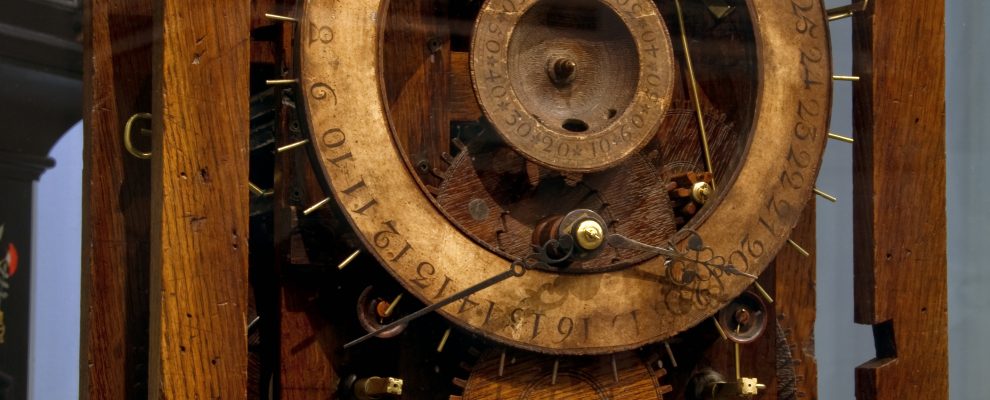The problem of determining longitude at sea had exercised the minds of mathematicians, astronomers and natural philosophers for as long as ships had sailed the open oceans. In 1714 the British Government, concerned at the danger to Britain’s growing naval power and maritime trade presented by the inability of seafarers to know their precise position, offered a prize of £20,000 (equivalent to about £2,000,000 today) for anyone who came up with an effective solution.
It took until the 1770s for the longitude problem to be solved and for the prize money, grudgingly, to be paid out. The man who provided the solution was not a member of the scientific or academic elite but a Yorkshire-born practical clockmaker who had begun his career as a carpenter in the family business in the North of England: John Harrison (1693-1776).
John Harrison, born near Wakefield in Yorkshire, was an eminently practical genius. He brought inspired yet simple mechanical solutions to complex problems. Confronted by the damage caused to clock mechanisms by poor quality contemporary oils, Harrison constructed a clock using components made of wood, including the naturally oily wood lignum vitae, meaning that it required no additional lubrication. Eliminating mechanisms that produced friction also reduced the need for lubricating oils to be used. Harrison’s ‘grasshopper’ escapement, in which the two pallets that receive the energy from the clock mechanism jump in and out of the teeth on the escape wheel rather than sliding along the surface of the teeth, removed a source of friction, meaning that no oil was required and reducing the potential for inaccuracy. Similarly, the use of different metals in Harrison’s compensating pendulums reduced the effects of temperature change, which caused conventional pendulums to change in length and thus lose precision.
Harrison brought the same inspired practicality to solving the longitude problem, experimenting over many decades until he had achieved his final solution, the H4 timekeeper: a large pocket-watch design using a high frequency balance, temperature compensation and jewelled bearings to create a mechanism of superb precision.
The longitude problem was a practical matter, solved by a practical man. Harrison’s quest for precision had a purpose: to establish the vital basis of accurate timekeeping upon which an expanding global mercantile nation depended. Increasingly, Georgian England demanded precise timekeeping for a host of economic, military, social and cultural activities, from astronomical observation to the running of stagecoaches, the timing of horse races to the operation of fleets of merchant ships, the working of factories to the control of complex scientific experiments. When Captain James Cook sailed on his second voyage of discovery to the South Seas in 1772-5 he took a Harrison chronometer with him and praised the instrument as a ‘never-failing guide’. Captain Cook, like countless others, understood that Harrison had given the Georgian age what it demanded: precision with a purpose.
(From Keeping Time a temporary exhibition at Fairfax House, 5th October-31st December 2012)

Name: Hannah Phillip
Title: Director
Source: Keeping Time (Fairfax House, 2012)
